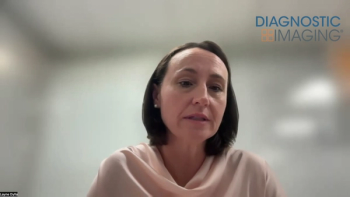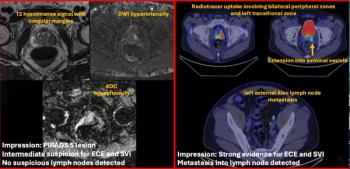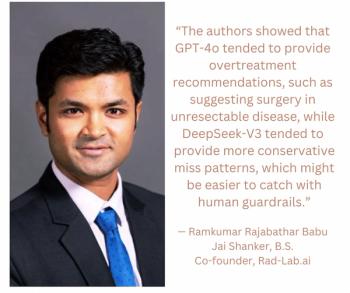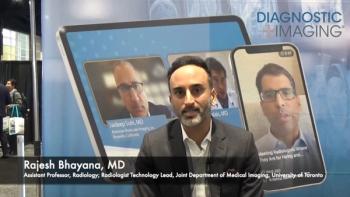
Can the Use of CT-Based AI Lead to Earlier Detection of Progressive Pulmonary Fibrosis?
The AI-enabled e-Lung software may lead to significantly improved and earlier detection of progressive pulmonary fibrosis, even in patients deemed clinically stable, according to new research recently presented at the American College of Chest Physicians (CHEST) conference.
Emerging research from the recent American College of Chest Physicians (CHEST) conference suggests that AI may have a significant impact in facilitating earlier detection of progressive pulmonary fibrosis (PPF) on computed tomography (CT) scans.
For the retrospective multicenter study, researchers assessed the use of the AI-powered e-Lung software (Brainomix) to detect PPF in patients who were previously deemed as clinically stable. They defined radiographic progression of pulmonary fibrosis as having one or more of the e-Lung measured parameters: decline of e-Lung volume > 10 percent; > 3 percent increase in the weighted reticulovascular score (WRVS); and/or a > 1.5 percent increase in total disease extent (TDE), according to the study.
At three centers specializing in interstitial lung disease (ILD), the researchers found that e-Lung software detected occult radiologic evidence of PPF in 55 to 97 percent of patients who had previously been deemed as clinically stable. In a recent interview with Diagnostic Imaging, Peter George, MBBS, BSc, PhD, FRCP, discussed the potential impact of these findings.
“ … This opens up a whole new pool of patients who may have been eligible and would have benefited from therapies that they had not been offered. But importantly, the measures that we use to define progression radiologically were associated with mortality. So these are clinically relevant changes on a CT scan that perhaps are not visual (or) cannot be accessed by a radiologist or visualized by a radiologist, but using a AI-powered quantitative CT tool that we have in E-Lung could be accurately and robustly identified,” maintained Dr. George, a consultant pulmonologist at Royal Brompton Hospital in London and senior medical director at Brainomix.
In other findings from the aforementioned multicenter retrospective trial, Dr. George noted that e-Lung software could have detected PPF up to two years earlier than unassisted clinician or radiologist assessment in approximately 60 percent of the cases on average among the three specialist centers.
“ … We could have identified features on CT associated with progressive pulmonary fibrosis up to two years before than patients were eventually diagnosed in these very high performing and high functioning specialist services,” pointed out Dr. George.
(Editor’s note: For related content, see “
For more insights from Dr. George, watch the video below.
Newsletter
Stay at the forefront of radiology with the Diagnostic Imaging newsletter, delivering the latest news, clinical insights, and imaging advancements for today’s radiologists.




























